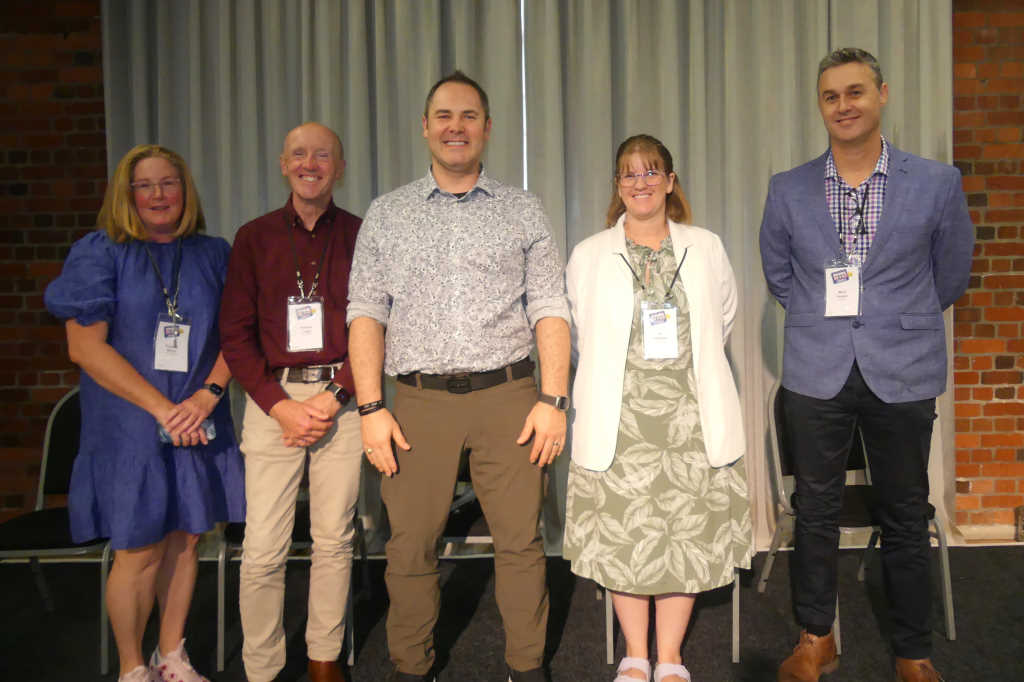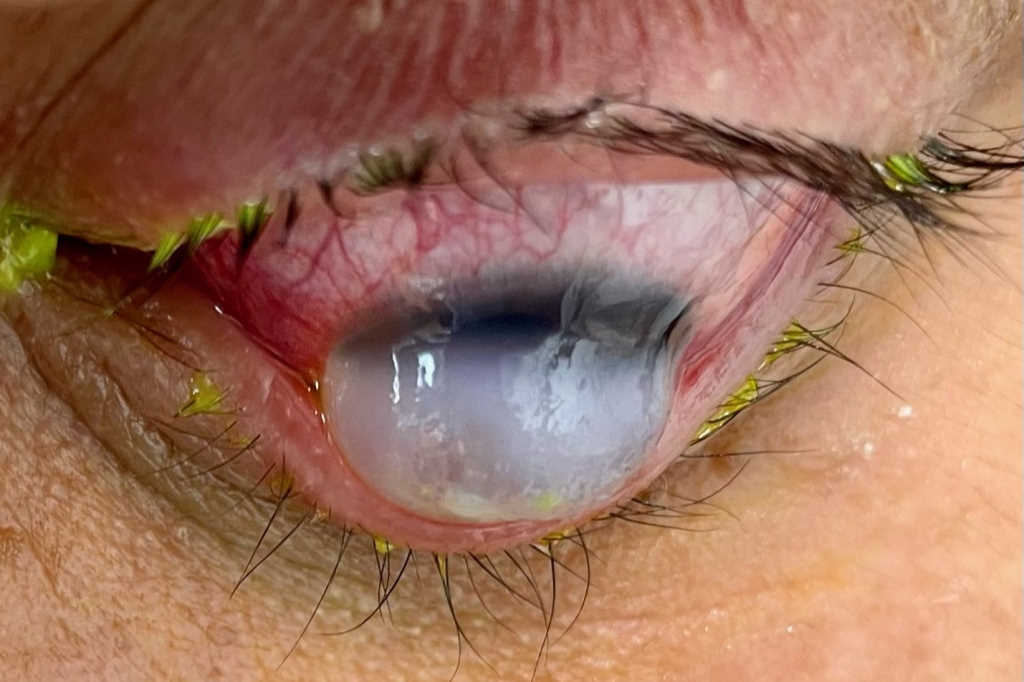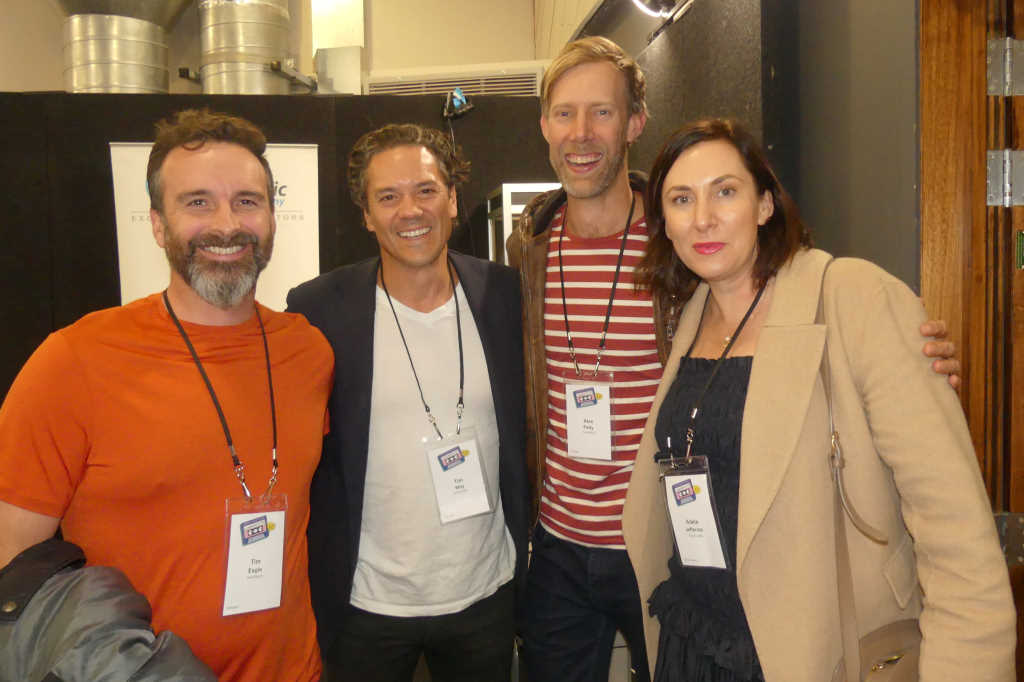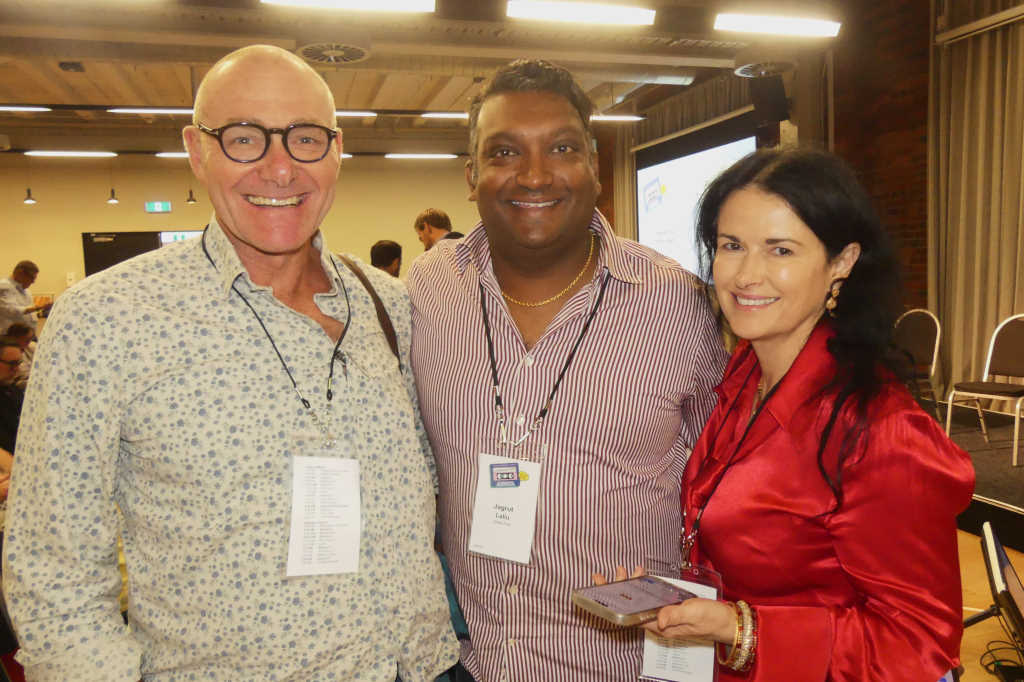CCLS NZ 2024: Hits, puns and highlights
The Cornea and Contact Lens Society (CCLS) 2024 conference was held in Wellington from 22-23 March at the Harbour Venue Centre, a lovely historic building which must be prone to earthquakes and tsunamis if the opening notices were anything to go by. The theme for this year’s conference, ‘Mix Tape: all the hits and new tracks’ gave the speakers the opportunity for some fantastic ophthalmic puns, something that seems to appeal to optometrists, including yours truly. A special mention to Tui Homer of Wanaka, who really embraced this theme with a music ophthalmic pun for each clinical case in her presentation! Here are a few conference highlights.
The cornea
The ‘Foreign body and abrasion management workshop’ was hosted by Richard Johnson, apparently an 847 foreign-body-removalist veteran himself, so definitely the man for the job. With the help of some pig eyes, which had witnessed some severe grinding injuries, attendees were given ample opportunity for practical foreign-body removal and conjunctival abrasion cleaning. This was incredibly valuable as confidence is key with these particular skills. The workshop also provided a comprehensive management review of both these conditions, making it a very worthwhile undertaking.
Keratoconus was honoured with its own session of presentations, with the overarching key take-home message: it’s never too early to refer for corneal crosslinking, especially for young patients. Other useful take-aways: it’s possible to crosslink the same eye up to three times; supplementary vitamin D (1,000IU daily) is useful due to the serum vitamin deficiency found in keratoconic patients; and wearing a hat and sunglasses following crosslinking can be helpful for patients suffering haze in their vision (which usually disappears after six months).
The recently published Lifestyle Report by the Tear Film & Ocular Surface Society (TFOS) is a 10-part body of work which includes how contact lenses, cosmetics, digital environment, elective medications and procedures, environmental conditions, lifestyle challenges, nutrition and societal challenges affect the ocular surface. Professors Jennifer Craig from Auckland and James Wolffsohn from Aston University in Birmingham, UK, provided a rundown of the highlights of this report. I would recommend reading the executive summary available at www.tearfilm.org as the 40-minute presentation could only just touch the surface.
Keynote speaker Professor William Power, from the Royal Victoria Eye and Ear Hospital and St Vincent’s University Hospital in Dublin, Ireland, discussed keratoprosthesis surgery, which was particularly interesting, even if many of us are unlikely to see it regularly in practice. Reserved for those eyes that have had corneal graft failure, chemical burns, severe Stevens-Johnson syndrome or mucous membrane pemphigoid, 50% of patients with these inserts reached 6/12 visual acuity. Two types are available: type 1, with the ocular surface through the damaged cornea; and type 2, with the ocular surface through the closed eyelid.
Contact lenses
US keynote David Kading, a specialist in dry eye, specialist lenses and myopia management and host of The Myopia Podcast, began by explaining how artificial intelligence (AI) is transforming contact lenses. As a closet tin-foil hatter, I couldn’t help but feel slightly wary of what the future holds in this space (full-time augmented reality with ads flashing in front of me whilst out on a hike!). However, with the advancement in technology in this area, the potential for improved customisation of lenses for all patients is exciting.
The hyperopic ortho-k workshop was hosted by Alex Petty from Tauranga following his lecture on the same topic the previous day. Wellington’s Eleisha Dudson had kindly arranged one of her recent hyperopic ortho-k fit patients to attend, allowing us to view lenses on the eye and the live corneal topography. We were also able to hear the patient’s firsthand account of their ortho-k journey so far (they were on day six of lens wear). Petty also took us through the patient’s case history, pre-treatment topographies and lens design via the EyeSpace application. This was the highlight of the conference for me. I left feeling ready to tackle this myself and more motivated to present hyperopic ortho-k as an option to my patients.
Veteran Wellington-based optometrist Andrew Sangster, in his amazing shoes, walked us through mini-scleral lenses including the need for toricity in the peripheral curves, the importance of treating any meibomian gland dysfunction before fitting lenses and the usefulness of optical coherence tomography (OCT) in assessing the fluid reservoir clearance. Kading followed up the next day with the basics of scleral lens fitting, reiterating the OCT imaging of the central clearance. This was followed by an interesting discussion during question time about the potential of multifocal scleral lenses.
Not to be forgotten, soft contact lenses got their moment in the limelight with presentations on Alcon’s Precision Balance toric lens, Bausch + Lomb’s Ultra lenses and the new Johnson & Johnson Abiliti 1 Day soft lens for myopia management. but my own spreadsheet consists of just over 50 types. Understanding the mechanics of the materials and lens design and being able to assess real life patients with each of these lenses is impractical, hence why we all have our 'go-tos'. However, there is huge benefit in being updated and gaining some understanding of the newest technologies now available to us as practitioners, as ultimately the lenses we favour will be what our patients end up wearing and we all want to supply them the best options.
Prof Wolffsohn presented the key practical findings from the British Contact Lens Association (BCLA) contact lens evidence-based academic reports. A very worthwhile summary of these reports is available at www.bcla.org.uk. As Prof Wolffsohn highlighted, just because we learnt something when we were in optometry school, does not necessarily mean it’s still applicable today. A few fun facts: there is no need to build up wearing time of soft contact lenses; the requirement to demonstrate competency by removing and applying a lens three times appears arbitrary (hoorah, you can cut down those teach times if you’ve been doing this); and patients still need to be mechanically rubbing their lenses to clean them.
Outside the conference room
Well-known for the fun social side of its events, CCLS 2024’s conference dinner did not disappoint, with a rowdy quiz session on different musical topics (where the music-identifying app Shazam really came into its own); some great costumes representing 1980s pop stars and some much older rock stars; a paper-plane flying competition (won by Tim Eagle and NZ Optics’ Lesley Springall); all served with some great food and good company. Watching OIC’s Chris Way attempt to master some seriously high heels on the dance floor was definitely a highlight!
This year’s conference was my first and it was both fun and interesting, and clearly showed that a lot of hard work had gone on behind the scenes by both the CCLS Council and its conference organisers. Will I go again? Absolutely! Am I now worried about tsunami and earthquakes when I visit Wellington? I think I should be.
Clare Luoni is an optometrist at Vivian Optometrists. After graduating from the University of Auckland in 2011, she’s worked in private practice in New Zealand and Australia, locumed throughout rural and outback Australia and spent five years with the Fred Hollows Foundation in Fiji, before settling in New Plymouth with her young family.
With additional reporting on the dinner by Lesley Springall



























